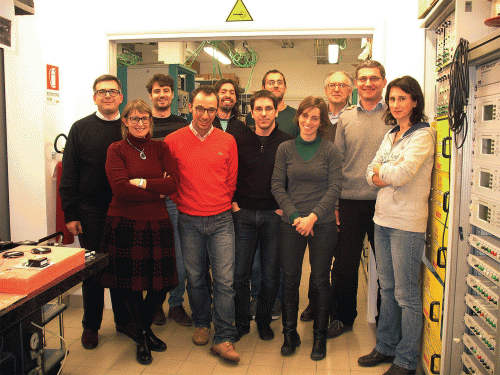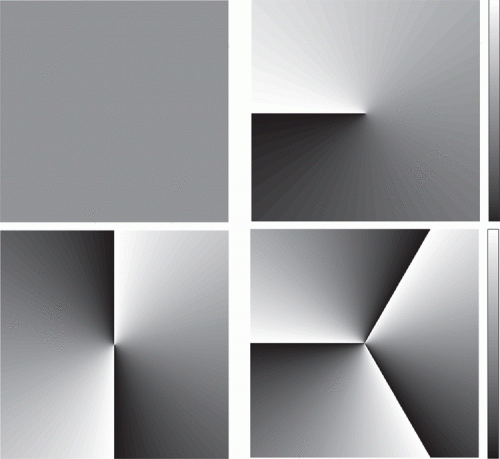Experimental proof of an interferometric orbital angular momentum mode multiplexer/demultiplexer

Researchers at PoliCom, Politecnico di Milano have presented the first experimental proof of an interferometric orbital angular momentum mode multiplexer/demultiplexer, exploiting a very compact configuration based on cylindrical lenses. 20-Gbit/s error-free transmission demonstrates the effectiveness of the proposed energy-saving all-optical passive demultiplexing technique, which is very promising for increasing the capacity in short-range optical links for data communications, where the power consumption is a fundamental issue.
We spoke to Paolo Martelli, one of the authors of the research, to find out more about how light can carry angular momentum and how this can be used in communication.
Tell us about light and angular momentum
In 1992, the seminal paper of Allen et al. recognised for the first time that light can carry orbital angular momentum (OAM), which they demonstrated in the well-known Laguerre-Gaussian laser beams.
More generally, a monochromatic light beam carries an OAM equal to lh/(2π) per photon when the spatial distribution of the field in the plane orthogonal to the propagation axis is characterised by an azimuthal phase term exp( ilθ), where θ is the azimuthal coordinate and l is the azimuthal index, which can assume any integer value. This phase term gives a complex phase structure to the beams carrying OAM, whose phase fronts consists in l intertwined helices. The integer l can be also seen as the topological charge of an "optical vortex" and gives the number of 2π phase variations that occur in one revolution of the azimuthal angle θ, as shown by the transverse phase patterns of the lower image.

The possibility of generating and manipulating beams of light with different values of OAM opens new exciting possibilities in optics. The orbital angular momentum can be seen as a further physical observable held by the photon, which adds to the energy (related to the wavelength or frequency), the linear momentum (related to the propagation wave vector) and the spin angular momentum (related to the state of polarisation).
How does this affect communications technology?
One OAM application, of great relevance for optical communications, is that OAM represents a new dimension in multiplexing, in addition to the already deployed time, wavelength and polarisation. In fact, the orthogonality of OAM modes suggests the possibility of simultaneous transmission from different users, each on a separate channel. A possible approach for counteracting crosstalk in these systems is multiple-input multiple-output (MIMO) digital signal processing, which has already been exploited in polarisation-division multiplexing and in mode-division multiplexing (MDM) with linearly-polarised fibre-optic modes. However, real-time MIMO processing requires high-speed electronic circuits and should be avoided in applications where power consumption is a relevant issue, such as optical access networks, optical interconnects and data communication between servers.
What do your results allow?
The interferometric scheme described in our work opens the immediate development of a passive, all-optical multiplexer/demultiplexer characterised by high compactness and modularity. In particular, our experiments represent a preliminary proof of principle in bulk optics, demonstrating the effectiveness of the proposed approach for OAM mode multiplexing/demultiplexing.
We will follow this proof of concept with a micro-optic realisation of our interferometer with pairs of cylindrical lenses, where Fresnel lenses with short focal length, together with miniaturised prisms and beam splitters, will allow a very compact design. Such a component can be applied in very high capacity transmission systems, both for datacom and telecom applications. From this perspective, our research team will continue investigating the advantages and capabilities of the proposed optical solution, as alternative to different MDM approaches based on ultra-fast digital signal processing.
Discover the latest in science, tech, and space with over 100,000 subscribers who rely on Phys.org for daily insights. Sign up for our free newsletter and get updates on breakthroughs, innovations, and research that matter—daily or weekly.
What is the future of angular momentum?
We believe that a significant part of the technological development in the next-decade optical communications will be focused on the realisation of components for MDM, as mode multiplexer/demultiplexers, and for the management of network functionalities based on modes. In particular, the exploitation of OAM modes without MIMO could be an advantageous solution, in terms of cost and power consumption, for increasing the capacity and implementing network functionalities in data communications inter and intra data centres. On the other hand, optical transport would be ever more focused on SDM solutions able to cope with the cross-talk between multiplexed channels, as the exploitation of either multimode fibres with high-complexity MIMO or multicore fibres, where the limited overlap between fields propagating in different cores reduces the cross-talk with respect to multimode fibres.
More information: Interferometric orbital angular momentum mode multiplexer/demultiplexer based on pairs of cylindrical lenses, DOI: 10.1049/el.2014.3972
Provided by Institution of Engineering and Technology
This story is published courtesy of Electronics Letters. For additional Electronics Letters news and features visit theiet.org/eletters.




















